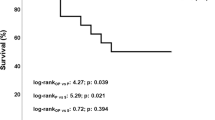Abstract
IT has recently been established that the rapidity with which various species of Gram-negative organisms are eliminated from the mouse peritoneum, is entirely dependent on the availability of opsonic factors1,2. In the normal mouse peritoneum there are large numbers of mononuclear cells3 which, once they have engulfed the injected bacteria, destroy them equally rapidly irrespective of their virulence for the mouse. The limiting factor which determines whether overall bacterial multiplication occurs is the rate at which the organisms are phagocytosed, and this is controlled by the supply of opsonic factors. Virulent strains for example of Salmonella typhimurium require greater concentrations of serum opsonic factors to promote phagocytosis than do avirulent members of the same species4. That these considerations apply to intraperitoneal infections was apparent by the finding that pretreatment of virulent S. typhimurium organisms with dilute specific antiserum before injection, greatly altered the capacity of these organisms to cause disease and death in mice1. Treatment by dilute antiserum did not by itself affect the viability of the organisms. It seems clear that the trace amounts of antiserum adsorbed by the injected bacteria rendered them susceptible to phagocytosis and this changed the whole balance of the host/parasite interaction.
This is a preview of subscription content, access via your institution
Access options
Subscribe to this journal
Receive 51 print issues and online access
$199.00 per year
only $3.90 per issue
Buy this article
- Purchase on Springer Link
- Instant access to full article PDF
Prices may be subject to local taxes which are calculated during checkout
Similar content being viewed by others
References
Whitby, J. L., and Rowley, D., Brit. J. Exp. Path. (in the press).
Rowley, D., and Whitby, J. L., Brit. J. Exp. Path. (in the press).
Rowley, D., Nature, 181, 1738 (1958).
Rowley, D. (submitted to J. Exp. Med.).
Neter, E., Bact. Rev., 20, 166 (1956).
Westphal, O., Lüderitz, O., and Bister, F., Z. Naturf., 73, 148 (1952).
Crumpton, M. J., Davies, D. A. L. and Hutchison, A. M., J. Gen. Microbiol., 18, 129 (1958).
Hobson, D., J. Hyg., 55, 334 (1957).
Schneider, A. H., and Zinder, N. D., J. Exp. Med., 103, 207 (1956).
Author information
Authors and Affiliations
Rights and permissions
About this article
Cite this article
JENKIN, C., ROWLEY, D. Opsonins as Determinants of Survival in Intraperitoneal Infections of Mice. Nature 184, 474–475 (1959). https://doi.org/10.1038/184474a0
Issue Date:
DOI: https://doi.org/10.1038/184474a0
This article is cited by
-
Opsonin Depletion after Surgery
Nature (1970)
-
Mechanism of Immunity Against Brucella
Nature (1965)
-
Antigenic Cross-Reaction between Host and Parasite as a Possible Cause of Pathogenicity
Nature (1962)
-
Die lokale Leukozytenreaktion bei der intraperitonealen Infektion der Maus mitE. coli
Experientia (1960)
Comments
By submitting a comment you agree to abide by our Terms and Community Guidelines. If you find something abusive or that does not comply with our terms or guidelines please flag it as inappropriate.



